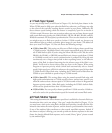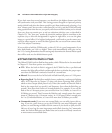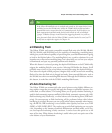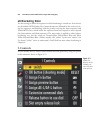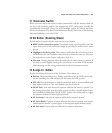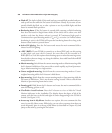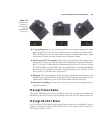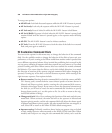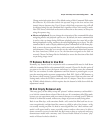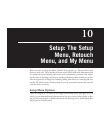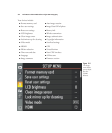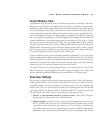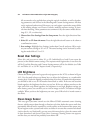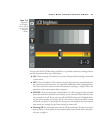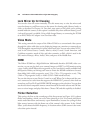Change main/sub option above). The default setting of Sub-Command Dial retains
this behavior. If you’d rather unlock the aperture ring on the lens and use that
instead, choose Aperture ring. Type G lenses, which lack an aperture ring, will still
be adjusted using the sub-command dial, regardless of how this setting is made.
Non-CPU lenses, which lack an electronic connection to the camera, are always set
using the aperture ring.
■ Menus and playback. You can change the orientation of the command dials when
navigating menus and playback options, too. By default, the main command dial
is used to select an image during full-frame playback; move the cursor left or right
during thumbnail viewing, and move the menu highlighting up or down. The sub-
command dial is used to display additional photo information in full-frame play-
back, to move the cursor up and down, and to move back and forth between menus
and submenus. (Note that you can also use the multi selector directional buttons
for these functions.) When set to On, the functions assigned to the dials are
reversed. Choose On (Image Review Excluded) to reverse the functions of the dials
except during image review.
f7 Release Button to Use Dial
Normally, any button used in conjunction with a command dial must be held down
while the command dial or sub-command dial is rotated. Choose Yes for this option if
you want to be able to press the button and release it, and then rotate the command
dial. You can continue to make adjustments until the button is pressed again, or you
press the metering mode, exposure compensation, flash, ISO, Qual, or WB buttons, or
the shutter release button is pressed halfway. Exposure meter time-out also turns off
Setting mode, unless the D7000 is connected to an AC adapter. Chose No to return to
the D7000’s default behavior, which requires that the button be held down while the
adjustment is made.
f8 Slot Empty Release Lock
This entry gives you the ability to snap off “pictures” without a memory card installed—
or to lock the camera shutter release if that is the case. It is sometimes called Play mode,
because you can experiment with your camera’s features or even hand your D7000 to a
friend to let him fool around, without any danger of pictures actually being taken.
Back in our film days, we’d sometimes finish a roll, rewind the film back into its cas-
sette surreptitiously, and then hand the camera to a child to take a few pictures—with-
out actually wasting any film. It’s hard to waste digital film, but “shoot without card”
mode is still appreciated by some, especially camera vendors who want to be able to
demo a camera at a store or trade show, but don’t want to have to equip each and every
demonstrator model with a memory card. Choose Enable Release to activate “play”
mode or Release Locked to disable it.
Chapter 9 ■ Setup: The Custom Settings Menu 309



